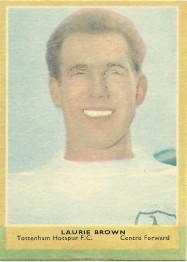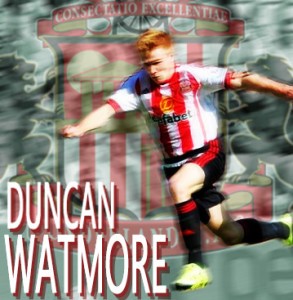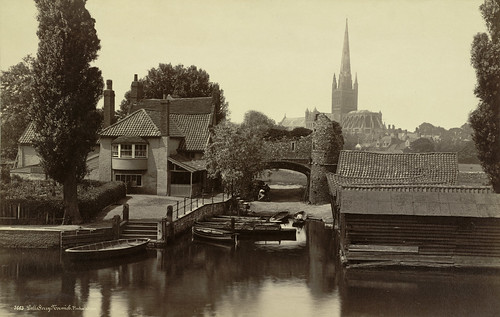This is turning into a classic series from Pete Sixsmith. Can he possibly keep it up? If he can, there must be a book in this gripping series of reminiscences from a man who has seen more football grounds than Donald Trump has mislaid staff.
In the third instalment of The First Time Ever I Saw your Team, Sixer again mixes football nostalgia, history and travelogue as he prepares for a weekend’s trip to Norwich City with a look back to the first time he visited Carrow Road …
After experiencing one of the birthplaces of the Industrial Revolution in Bury, with its steam railway, its statues of Sir Robert Peel and John Kay (the inventor of the Flying Shuttle rather than the legendary SAFC full back of the late 80s and early 90s) and the home of Richmal Crompton of William fame, we take to the road once again.
This time we are travelling in an easterly direction, ignoring the high Pennines and touching on the low Fens as we trek along the A17/47 super route to what has oft been described as “Britain’s nicest city”, Norwich.
A city that is dominated by its medieval cathedral and its Norman Castle keep, Norwich is high on the list of favourite places for footy fans to visit.
It’s a compact place, has none of the industrial sprawl of our own, dear Sunderland and the only threatening thing about it is the sheer friendliness of the locals who cannot wait to thank you for coming to their home on the River Wensum and thrusting pints of Chalk Hill Brewery ales into your hands while getting all rheumy eyed about the 1985 Milk Cup Final.

It really is a gem of a place to visit and as our relegation became apparent around about Christmas (or August 20 if you were Moyes, D), I wished nothing but bad luck on the Canaries as I eagerly anticipated another visit to the city that gave us Olivia Coleman (fine actor), Mr Pastry (favourite of mine when I was about six), Ed Balls (crazy name, crazy guy), Chris Sutton (perceptive observer of the footy scene – although I thought his “cesspit” comment was going a bit far. I put it down to him being narked that we beat them in the 1992 semi-final) and Billy Bluelight, a local character (or idiot) who eked a living out of racing steamboats along the River Wensum. He wouldn’t have made much chasing and Austin an Pickersgill SD 14 from Pallion to Roker, that’s for sure.
My first visit was in January 1968 when I was still at school. We were a mighty First Division team, they had never risen to such dizzy heights and when they drew us in the FA Cup, I imagine that all of Norfolk was a-quiver at the prospect of one of the big Northern teams who had been at the top of the league when City were playing in a chalk pit known as The Nest, visiting their town.
We were not quite as mighty as we had been pre and immediately post war. Under Ian McColl we were struggling and the bad element that seems to permanently occupy our dressing room had been purged. Jim Baxter had been packed off to Nottingham Forest and his even more hard-drinking cousin, George Kinnell, was on the way out.
McColl, a former manager of Rangers and Scotland, had been backed in the transfer market. Geoff Butler had been signed from Chelsea and a big fee had been paid to Burnley for Gordon Harris, an inside forward with one England cap and a very low centre of gravity. And he had brought in Ian Porterfield from Raith Rovers, a man who was to become one of the great SAFC heroes five years later.
At that time, I was delivering Sunday newspapers for Jimmy Wilson, stepfather of George Reynolds (file under Darlington FC, money in car boot, safe blowing in Sunderland).
I must have had some Christmas money left as I booked my seat on the SAFCSA coach run by the legendary John Tennick (the uncle of the aforementioned Mr Reynolds) and was picked up at 1am. opposite the Imperial Hotel in Darlington.
The overnight trip was brutal. If you think the roads into East Anglia are poor now, you never saw them in the 60s. The only stretch of motorway was the Doncaster by pass and there were more roundabouts than you would find at a dozen theme parks. It was a cold night as well as we were deposited into a sleepy Norwich at some absurd hour.
Even at the age of nearly 17, I sought out local beers. Norwich was dominated by three breweries at the time; Steward and Pattesons, Bullards and Lacons. By 1968, the first two had been taken over by those ever so nice people from Watney’s and the good folk of Norwich were being force fed pints of the world’s most obnoxious ale, Watney’s Red Barrel, a beer so vile that it makes Worthington Creamflow taste like Timothy Taylor’s Landlord.
As a callow youth, I presumably enjoyed the WRB comparing it favourably with other such brews as Whitbread Tankard, Courage Tavern Keg and Mitchell and Butler’s Brew Ten. I vaguely remember drinking around the city centre before walking past the wharves and warehouses alongside the River Wensum as we wandered out to Carrow Road.
It was a very different Carrow Road from the neat and tidy (if somewhat boxy) 2017 version. There was a long, covered terrace down one side, a cover on the Barclay End, an uncovered River End and a relatively low main stand that paled into insignificance when compared to the magnificent Archibald Leitch Stand at Roker. The capacity was 38,000, although the record attendance was well in excess of that when, in 1963, 43,894 squeezed in for an FA Cup Sixth Round game against Leicester City. Health and Safety? Pah!!!
Carrow Road had one advantage over Roker Park in that it had a reigning monarch attend a game, when King George VI (known to us greybeards as “the Old King”) pitched up from his holidays at Sandringham. It is to be presumed that Elizabeth and Margaret were squabbling over who should use the fretwork kit and his wife, Elizabeth, was out supping pints of Lacons at some hostelry.
So he fired up the royal Roller and went to see Norwich City play Millwall. He lasted 20 minutes before a man in the crowd, wearing an overcoat, a muffler and a cap, identified him as the soon to be Old King and there was a queue of people with Box Brownies demanding selfies. He decided to return to his stamp collection and never even got a half time pie.
The game I saw ended in a 1-1 draw. We lined up thus:
Montgomery; Irwin, Todd, Kinnell, Butler; Stuckey, Porterfield, Harvey, Hughes; Martin, Suggett.
I think they lined up:
Keelan; Stringer, Black; Lucas, Brown, Sharpe; Foggo, Anderson, Manning, Curran, Crickmore.

Left back Alan Black had played a handful of games for us a couple of years earlier having signed from Dumbarton for a modest fee (about as much as we can pay now) and the centre half was Laurie Brown, a Shildon lad, who had had a good career after leaving the British Rail workshops in the town.
He represented Great Britain in the Rome Olympics of 1960 and then joined Northampton Town from Bishop Auckland. George Swindin, the Arsenal manager, saw him, signed him, gave him 109 games for the Gunners and then, controversially, sold him to North London rivals, Tottenham Hotspur.
Bill Nicholson used him as an auxiliary centre forward when Bobby Smith was injured but he soon moved eastwards to Carrow Road and played 82 games for the Canaries, eventually moving closer to his Shildon roots at Bradford Park Avenue where he was soon appointed player manager.
Avenue were in steep decline and he was their penultimate Football League manager before moving to Altrincham then Kings Lynn and finally Stockton. He hung up his boots and ran the Redworth Arms in Shildon for a while before he died in 1998. Known to all in the town as “Lol”, he was a well-respected man and a fine footballer.
He wasn’t popular that weekend though. We scraped a draw at Norwich thanks to Colin Suggett and then lost the replay four days later to a John Manning goal as Norwich, prompted by the excellent Terry Anderson, dumped us out of the Cup and Ian McColl out of a job.
Since then we have crossed swords a few times. Two years ago they won 3-1 at the Stadium of Light to set alarm bells ringing and convince Dick Advocaat and his Mrs that he had made the wrong decision in coming back.

Seven months later, under Sam Allardyce, we wiped the floor with them at Carrow Road, with the Three Ks looking like world beaters. Where did all that go wrong?
I shall be there on Sunday after taking in games at Fakenham on Friday night and Boston Town on Saturday. A similar result to March 2016 would be lovely but under new boss Daniel Farke, they have made a solid start – a 1-1 draw at Craven Cottage followed by a win over Swindon in the EFL Cup.
They have rung the changes with established players like Bassong, Ruddy and Murphy leaving, replaced by a number of European players as the Canaries attempt to reprise the Huddersfield success story with an untried and unknown German manager.
But with a little luck, Yorkshire grit and Mackem magic may yet triumph over the more cosmopolitan outlook of the home team. As Delia would say, ”let’s be ‘aving them…..”


The replay was my first sight of Norwich, I found my childhood eyes offended by their strip, it was so revoltingly luminously horrible.
And that was why we lost.
My dad just nodded and lit a woodbine.
Even though I spent a few years living in Thorpe St Andrew and was a regular visitor to Carrow Road my first Canaries game was at Roker – a 0-3 (Waites, Allcock, Larkin) defeat towards the end of 1960/61 season. In fact City did an Easter double over us that season with both games favouring them by the same score. My only real recollection of that first game was a remark I made to my neighbour – “That baldy’s a good winger isn’t he”?
Brilliant article and you seem to remember more than me about that game which was one of the first I attended at Carrow road aged 14. As I recall. we played Chelsea after at Stamford Bridge and we lost 1-0 in front of 57,000. The journalist of the day Sam Leitch called us giant kickers not giant killers